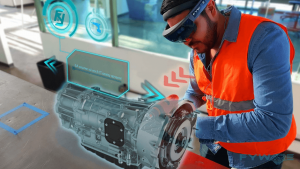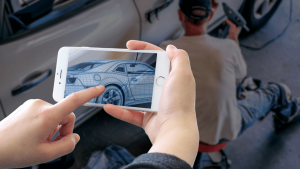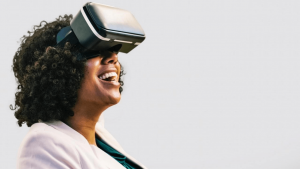6 AR Applications in the Car Industry
Information enhancement is becoming a larger and larger part of manufacturing.
The Internet of Things, virtual reality, machine learning, artificial intelligence, and machine vision are joined by augmented reality as high-technology solutions to specific issues in manufacturing.
Augmented reality (AR) is often associated with virtual reality. Where each differs is in the arena of operation.
Virtual reality creates an artificial world, blocking out reality, while augmented reality “augments” actual real-world experience with enhancements like graphics or data, presented on top of views of the actual environment.
No industry has embraced augmented reality like automobile manufacturing. The number of automotive CEOs who expected to invest heavily in AR was around 18 percent in 2017. By 2020, that number is expected to hit around 30 percent.
Clearly, to fuel this kind of astronomical growth, AR is having some profound impacts on the automotive industry. Some of the biggest impacts are in heads-up displays, sales, customer assistance, information presentation, engineering, maintenance, and training.
Heads Up Displays (HUD)
Since the late 1980s, some makers have included a HUD option similar to those found in aircraft, displaying operating data like velocity, engine speed, fuel consumption, and similar items.
Projecting this information onto the windshield in front of the driver overlaid onto the driver’s actual view of the road created an augmented reality.
These have grown into GPS navigation, lane departure guides for exiting the freeway and blind spot cameras.
Enhanced backing assistance displays a graphic of the “danger zone” directly behind the vehicle.
Trailer-backing aids on some pickups display where the trailer is going and how steering changes will affect its trajectory.
Sales
Using AR in the showroom. salespeople can use their smartphone camera to view the car with overlaid information about every option, financing and weight, performance or mileage.
This empowers sales personnel to provide instant answers to buyers hungry for knowledge.
This technology allows consumers to view the car where it sits, with the ability to walk around it, displaying different colors, options and trim in real-time.
With many brands offering dozens of models, this concept will save space for the maker and time for the consumer.
Owner’s Manuals
Some makers have developed installable owner’s manual apps that use AR on a phone or tablet.
Using the device’s camera, these apps can display information or directions right on top of particular features.
No more guessing how to operate the climate control or the navigation system.
Walking around the car, these apps display important points of concern to the owner, such as fuel ports or battery charging locations.

Engineering
AR in the engineering phase is useful in both the design and manufacturing stages. First when styling the car, second when exploring ideas on how to create the machine components.
During manufacturing, AR offers line assemblers and craftsmen crucial information through cameras on their machines that display accuracy of contact with parts as they are installed.
The assembly they are working on can be checked with information on the screen showing which options apply to that station, simultaneously improving both speed and quality of assembly.
Tesla has developed an AR program that automates the calibration and setup of cars leaving the assembly line.
This is a logical evolution of the assembly line, beginning first with Oldsmobile’s assembly line in 1901, Ford’s new moving line in 1913 and Nash’s dip tanks of anti-rust treatment in 1934.
Robotic welding by General Motors followed in 1961, Kawasaki’s 1974 use of robot arms and increasing computerization from the 1990s on have gradually led to the AR implementation we see today.
Maintenance
Some carmakers are using AR to improve maintenance services.
BMW is already using AR for service work. Others like Audi and Ford are currently developing AR maintenance procedures.
In the BMW system, maintenance techs wear headsets that project instructions, tools and procedures on the current work area.
Each automaker has dozens of different models coming in for service. When you multiply that by many years of production, things get complicated for service departments.
AR offers a way to save money in labor and warranty work.

Training
AR can be used for training of company personnel on the assembly line, in service procedures and in engineering and design.
Hyundai already provides customer training through its owner’s manual app.
Viewing the car through the camera on a phone or tablet reveals important information, points out service points and teaches owners how to handle minor maintenance.
Conclusion
AR is only the latest in a long line of high technology advancements embraced by automakers since Otto Daimler first drove his runabout. Automotive manufacturing has been a major technology driver for over 100 years.
Augmented reality won’t be the last big innovation, but will certainly continue to have a huge impact for decades to come.
Special thanks to our guest author!
 Author: Jen McKenzie
Author: Jen McKenzie
Jen McKenzie is an independent business consultant from New York. She writes extensively on business, education and human resource topics. When Jennifer is not at her desk working, you can usually find her hiking or taking a road trip with her two dogs. You can reach Jennifer @jenmcknzie


